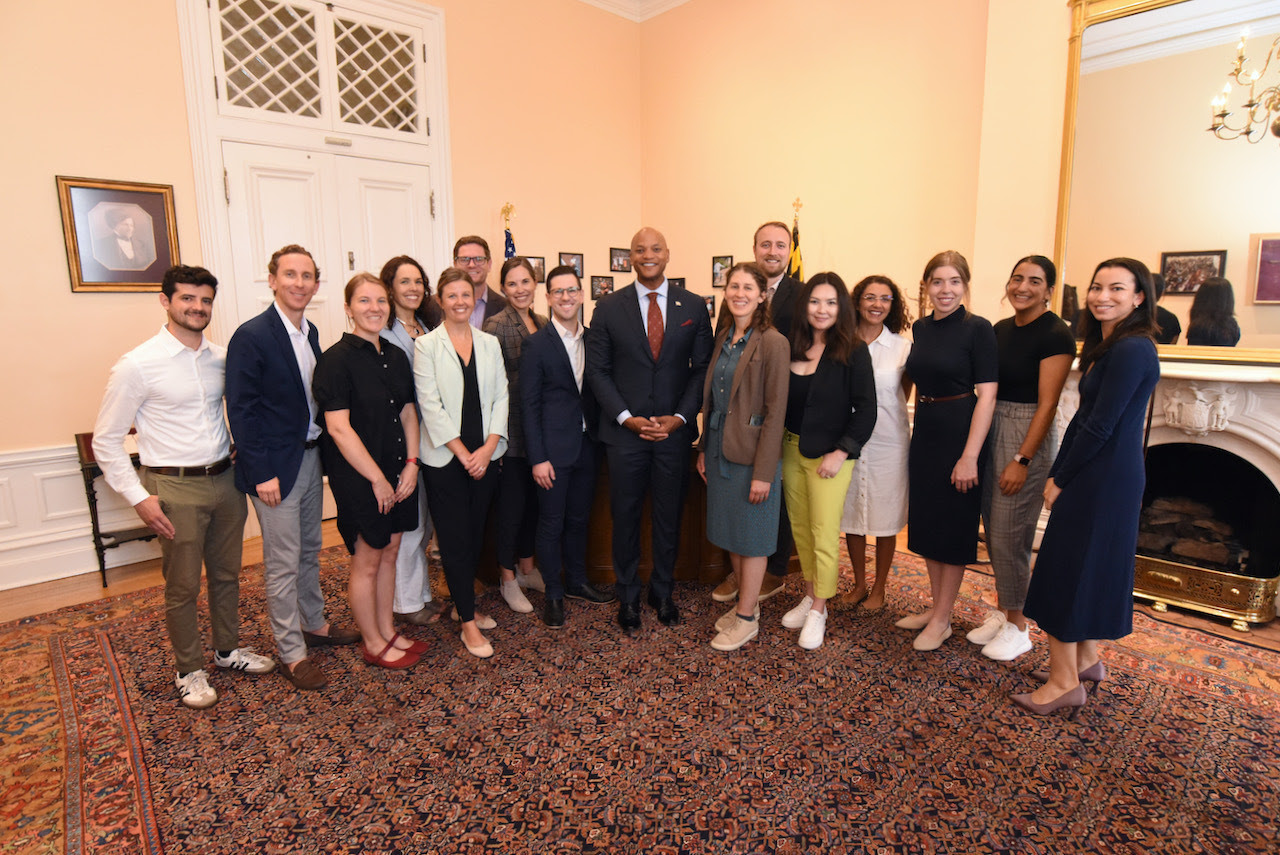ANNAPOLIS, MD — Governor Wes Moore this week hosted the U.S. Climate Alliance Secretariat for a meeting at the State House in Annapolis. During the meeting, the governor and the alliance discussed the Moore-Miller administration’s action to combat climate change and the path toward reaching Maryland’s ambitious climate goals.
“I see the climate crisis in our neighborhoods every day—it’s why we’re working to supercharge clean energy manufacturing and why we’re working to make our communities more resilient,” said Gov. Moore. “We must do all we can, and we must do it in partnership, to ensure a cleaner, greener Maryland–now and for future generations.”

The United States Climate Alliance is a bipartisan coalition of states and unincorporated self-governing U.S. territories that are committed to upholding the objectives of the 2015 Paris Agreement within their borders. The alliance is working to achieve the U.S. goal of reducing greenhouse gas economy-wide emissions 26-28% from 2005 levels by 2025 and meeting or exceeding the targets of the federal Clean Power Plan.
The Moore-Miller administration made clear its first official step towards combating climate change in January when Governor Moore announced that Maryland joined the U.S. Climate Alliance. That same month, the governor proposed a $422 million investment in protecting Maryland's environment through programs to support land preservation and operations and capital projects in state parks—along with another $129 million in General Funds to support the transfer tax repayment provision as revised by the Great Maryland Outdoors Act.
In March, Governor Moore announced major offshore wind energy initiatives to build a more economically competitive state. To move Maryland toward achieving its 100% clean energy goal by 2035,the governor announced that Maryland will significantly increase its offshore wind output and prioritize wind energy partnerships to position Maryland to be the country’s leader in offshore wind production.
In April, Governor Moore announced a new partnership between the Maryland Department of the Environment and The Center for Global Sustainability at the University of Maryland to model Maryland’s pathway toward a greener, cleaner state. The announcement came during a roundtable discussion at the State House with climate goal stakeholders including representatives from the Maryland Department of the Environment, University of Maryland, League of Conservation Voters, Maryland Commission on Environmental Justice and Sustainable Communities, and Blink Charging.
The governor also signed several major environment bills into law at the Tradepoint Atlantic facility in Sparrows Point with Ørsted, including the POWER Act, the Clean Trucks Act, and the Clean Transportation and Energy Act
In May, Governor Moore signed an executive order doubling Maryland’s energy conservation goal through state government greenhouse gas reductions, shifting from from a 10% decrease by 2029 to a 20% decrease by 2031. Under the order, all units of state government will, in support of their core missions, implement projects and initiatives to conserve energy and reduce greenhouse gas emissions.
In June, Governor Moore announced Maryland’s entry into the Biden administration’s National Building Performance Standards Coalition. The coalition will help deliver better buildings for 74 million people while eliminating an estimated 624 million metric tons of carbon dioxide. Maryland is one of only three states with statewide building performance standards. The state will require commercial and multifamily buildings that are 35,000 square feet and larger to reduce direct emissions by 20% by 2030 and reach net zero direct emissions by 2040.
In July, Governor Moore announced a major policy shift in how Maryland will deploy state resources to improve water quality in the Chesapeake Bay and other waterways to restore the Chesapeake and Atlantic Coastal Bays. Under the Moore-Miller administration, Maryland will become the first state in the Bay watershed to embrace the latest scientific recommendations to improve our land and clean our waterways, taking a proactive healthier waterways that are more accessible for Maryland’s communities, more resilient to climate change, and benefit the important industries that depend on the Chesapeake and Coastal Bays.
Maryland’s Climate Solutions Now Act of 2022 calls for 60% in emissions reductions by 2031—the most ambitious target in the country. The act requires the state to reduce greenhouse gas emissions by setting more aggressive state goals; requires electric companies to increase gross energy savings; develops energy efficiency and emissions reduction requirements for certain buildings; establishes zero-emission vehicle requirements in the state fleet; and establishes an electric school bus pilot program.
The Maryland Department of the Environment is currently welcoming public input on climate change strategies for Maryland to create a final policy framework and plan that will be delivered at the end of 2023.
###